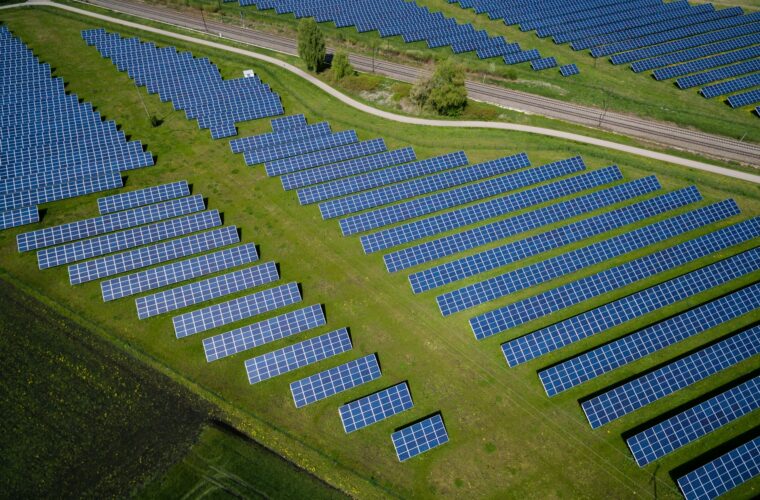LCA software: While many industries threaten our environment, the cosmetics industry leaves a lasting impact on the Earth by draining our natural resources in many ways and by polluting our waters and soils. As well as the destruction of our coral reefs leading to the buildup of microplastics in nature. The whole supply chain must be viewed through a critical lens to reduce the environmental impact of our beauty industry and it is not enough to simply look at whether the producer uses natural ingredients.
Cosmetics and their environmental impact
One of the major ways in which our cosmetics products pollute the environment is through single-use plastic packaging. The containers are often not recycled and end up in either our landfills or our waterways.
The transportation of cosmetic products that are made in foreign countries also results in a huge carbon footprint leading to the acceleration of global warming. It is essential to be aware of how far the final product, as well as its ingredients, has travelled to serve the customers.
Microplastics that are used in certain exfoliating skincare products are also causing damage when entering fragile ecosystems. They are consumed by marine life and via bioaccumulation end up in our livers.
The personal care industry is worth over $500 billion per year and relies heavily on packaging that does not end up being recycled or reused. Ingredients that harm the ecosystems surrounding us, threatening our wildlife and essentially the quality of our own life as well. Customers nowadays understand the impact of the products they use for personal care and beauty treatments more and more. They are making more thoughtful choices. Sustainability is at the forefront but there is now constant pressure to understand whether something is truly sustainable or falls within the realm of greenwashing. Companies that understand the need to meet the demand of customers who are more aware of their environmental impact, place a strong emphasis on real sustainability.
The industry needs to rely on methods grounded in science
As a result, there is a growing and widespread industrial need. As well as, a requirement for assessing sustainability in facilitating decision-making and evaluating the impacts of existing strategies, products, and technologies used during the manufacturing process. When we are trying to evaluate the sustainability of products, we cannot omit to speak about Life Cycle Assessment, LCA software. Stakeholders demand increased transparency. LCA as a science-based tool helps with just that: formulating a strategy focused on sustainability and objectively measuring progress.
It is essential to understand how a product might impact the environment along the whole supply chain. During life cycle assessment, experts examine the various impacts starting with the selection of raw materials. The common concepts by which we define products are natural, naturally derived, green, and organic; however, sustainability goes beyond these terms. All ingredients and processes that result in a product on our bathroom shelves need to be evaluated based on their potentially harmful effects. One can only reduce those effects when one is aware of them. Hence, the use of sustainability metrics tools and software brings great advantages to the cosmetic industry by enhancing the development and manufacturing of sustainable cosmetic products. To set and reach the appropriate goals regarding sustainability, LCA must be based on quantitatively robust data.

The life cycle of a cosmetic product – LCA Software
How does a product originate? Following the marketing brief, the research and development team starts creating the formula and product prototype. The packaging team selects the type of packaging and the material for it. At this point, data must be available for all of the teams. They need to know where the materials that they are planning to use for the product and its packaging are produced and what their exact impact is. Without LCA, all one could do would be simply to make an estimate and that estimation would probably be very wrong. So we now understand that LCA must work simultaneously together with product development.
At this stage, alternative materials and suppliers are listed and that is when it is essential to evaluate whether more environmentally friendly options are available. Meaning that there is no significant reliance on transportation as well as on chemicals that are harmful to the environment, as previously discussed. During the product formulation, scientists work on prototypes, taking special care regarding concentrations, allergens, chemical reactions, and costs.
Environmental and Social Aspects
At this stage, it is essential that while aiming at a high-quality product all environmental and social aspects are considered. We have arrived at a major step that it is essential to take in the direction of sustainability. Once the formula is developed, raw materials are selected and the team looks for packaging suppliers. And we are not yet done: companies must evaluate the use of the product and what happens after its sale.
At this point, it is apparent that environmental decisions must be made throughout the whole lifecycle of a cosmetic product. Greenhouse gases are emitted during the sourcing of materials and ingredients, the manufacturing process, the distribution of the product, its use and also in the post-consumer phase. Since LCA is an internationally standardized concept for quantifying the impacts of a product or service, it can be used to provide a holistic impact assessment. The International Organisation for Standardisation (ISO) has published two standards on LCA.

Who conducts LCA software assessments?
Companies can have a separate department dealing with sustainability that includes LCA or they may outsource the task. There are now specialized companies that deal solely with this segment of sustainability. This task is to quantitatively assess the water and carbon footprint of a given product. The assessment goes into every little detail we were previously talking about throughout every step of the process from the extraction and processing of raw materials to their manufacturing, distribution, use, recycling, and final disposal. Packaging can similarly be analyzed using LCA software. Companies then have the agency choose the most environmentally friendly materials and rely on the least harmful processes.
The software is often used to set a baseline for companies which can then be regarded as a measurement tool for improvement in the future as well. It largely helps deliver transparent messages to consumers and stakeholders. Therefore, the first phase of LCA, besides setting the exact scope of the assessment, also involves setting the goal of the intended use of LCA: the reasons and the audience. The second phase is then data collection. The third is the conversion of the data into environmental impact potentials, followed by the interpretation of the data.
LCA Software
The supply chain in every case might be different among all the various cosmetic products. LCA also helps give an overview of all the sources and suppliers which is essential when aiming for the best choice. Different products may have different levels of complexity. Certain products such as a shower gel may only require a bottle, a cap, and a label. While others, such as a foundation bottle or a powder palette may require more components that need to be assessed separately within the LCA software. Also, some products may need different types of plastic materials which makes their assessment, as well as decisions regarding their environmental impact more complicated.
And the story does not end there. There is a need for assessing the indirect packaging, transport, and end-life of the product. Luckily, standardized LCA software and life cycle assessment professionals can help the industry out. They can provide an understandable yet complex picture of what is currently working and what may need to be changed to achieve the goal of sustainability. With appropriate choices along the whole lifecycle, the impact of cosmetic products on the environment can be drastically reduced.



